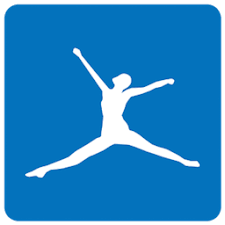MyFitnessPal, the popular app that helps millions of people track their fitness and nutrition goals, wasn’t always the global sensation it is today. Created back in 2005, it started as a simple website to help people manage their calorie intake. Over the years, it has evolved into a comprehensive tool that tracks everything from exercise to water intake. Let’s take a look at when MyFitnessPal was created, who started it, and how it grew into the app we know now.

The Origins of MyFitnessPal: When and Why It Was Created
MyFitnessPal was created in September 2005 by Mike Lee, who developed the app to solve a personal problem. Here’s how it all started:
- Personal Need: Mike and his wife were preparing for their beach wedding and wanted to lose some weight. They sought help from a fitness trainer, who provided them with a book containing the nutritional values of about 3,000 foods and a small pad of paper to track their calories.
- The Problem: While the method worked, Mike found it to be cumbersome and time-consuming. The process of manually logging every food item felt inefficient, especially when trying to stay on top of nutrition daily.
- Mike’s Background: Having been a programmer since he was 10 years old, Mike believed there had to be a better way to track meals. At the time, digital tools for food tracking were just as difficult to use as the manual methods, so he decided to build a solution.
- The First Step: Mike started working on his own food tracking tool during his spare time. He spent weekends and evenings refreshing his coding skills and building the first version of MyFitnessPal.
- The Launch: In September 2005, Mike launched MyFitnessPal as a website. His main goal was to make calorie and nutrition tracking easier and more accessible for people.
What began as a simple side project evolved into a global app that has since helped millions of people improve their health. MyFitnessPal’s origins are rooted in a personal challenge that many people can relate to: tracking food intake efficiently and accurately. From this challenge, Mike Lee created a tool that would grow into one of the most popular fitness and nutrition tracking platforms worldwide.

How MyFitnessPal Evolved Over Time
MyFitnessPal’s journey from a simple website to one of the most popular fitness apps in the world has been marked by several significant milestones and adaptations. Here’s a breakdown of its evolution:
1. From Website to Mobile App
- MyFitnessPal was first launched as a website in 2005, offering users a way to track their food intake and calories online.
- In 2009, as smartphones gained popularity, MyFitnessPal transitioned to mobile with the release of its iOS app, which made the platform more accessible and user-friendly. This transition helped MyFitnessPal reach millions of users worldwide.
2. Integration with Other Fitness Tools
- Over the years, MyFitnessPal expanded its functionality by integrating with various fitness apps and devices, including Fitbit, Garmin, Apple Health, and Samsung Health.
- This allowed users to sync their workouts, weight, and other fitness metrics alongside their nutrition data, providing a comprehensive view of their health.
3. The Introduction of Premium Features
In 2015, MyFitnessPal introduced a premium subscription service. This offered users:
- Custom macro goals
- Detailed progress reports
- Tracking beyond just calories
The Premium version provided a more personalized experience, allowing users to tailor the app to their specific health and fitness goals.
4. Acquisition by Under Armour
- In 2015, MyFitnessPal was acquired by Under Armour for $475 million.
- This acquisition provided MyFitnessPal with the resources to expand its offerings, enhance its features, and solidify its position as a leader in the health and fitness space.
5. Data Security and Challenges
- In 2018, MyFitnessPal experienced a data breach affecting 150 million users, compromising usernames, email addresses, and hashed passwords, though no financial data was affected, raising concerns about privacy.
- The company took immediate action to improve security protocols, ensuring better protection for user data moving forward.
6. Sale to Francisco Partners
- In 2020, Under Armour sold MyFitnessPal to the private equity firm Francisco Partners for $345 million.
- The app continued to innovate and grow under its new ownership, retaining its strong presence in the fitness app market.
7. Focus on Personalized Nutrition
Today, MyFitnessPal offers more than just calorie tracking. It focuses on personalized nutrition with features such as:
- Tailored meal plans
- A massive food database of over 20 million items
- Advanced fitness and nutrition tracking tools
Key Features That Set MyFitnessPal Apart
MyFitnessPal stands out in the crowded health and fitness app market due to its rich set of features that simplify the tracking of nutrition and fitness goals. Below are some of the key features that make MyFitnessPal a preferred choice for millions of users:
Extensive Food Database
MyFitnessPal offers one of the largest food databases in the industry, containing millions of food items.. This extensive collection includes everything from packaged goods to restaurant menu items, and even user-generated recipes. The app’s global reach ensures that users from different countries can find accurate nutritional information for their meals, making it a valuable tool for a wide audience.
Barcode Scanning
One of MyFitnessPal’s most convenient features is its barcode scanner. Users can simply scan the barcode of packaged foods to instantly log their calories and nutritional information. This feature saves time by eliminating the need for manual entry and streamlining the tracking process. It makes it much easier to stay on top of nutrition throughout the day, especially for those who rely on packaged foods.
Voice Logging
MyFitnessPal has introduced a voice log feature that allows users to track their meals using just their voice. Simply speak the foods you’ve eaten, and the app will log them for you. This hands-free convenience is ideal for busy individuals who want to track their meals without manually entering each item. It also suits those who prefer a more natural, hands-free approach to tracking their diet.
Macronutrient and Micronutrient Tracking
MyFitnessPal goes beyond simple calorie counting by allowing users to track their macronutrients – protein, carbohydrates, and fats. This feature ensures that users gain a well-rounded understanding of their diet and how each food item contributes to their overall nutritional goals. In addition to macros, MyFitnessPal also provides insights into micronutrient intake, such as vitamins and minerals, helping users maintain a balanced diet and make smarter food choices.
Meal Planning and Recipes
MyFitnessPal offers personalized meal plans based on users’ specific nutritional goals, whether it’s weight loss, muscle gain, or maintenance. Users can create their own recipes by adding ingredients and calculating the nutritional content, which can be saved and used to build meal plans for the week. This feature provides the flexibility to customize meals and maintain control over one’s diet while making it easier to stay on track.
Integration with Other Fitness Devices and Apps
MyFitnessPal integrates with over 35 fitness apps and devices, including Fitbit, Garmin, Apple Health, and Samsung Health. This integration allows users to sync their steps, workouts, calorie burn, and weight, providing a comprehensive view of their fitness journey. It eliminates the need for users to switch between multiple apps, creating a seamless experience where all health data is conveniently stored in one place.
Progress Tracking and Reports
MyFitnessPal offers detailed progress tracking, enabling users to see changes in their weight, nutrient intake, and overall health metrics over time. The app also allows users to generate customizable reports that break down their calorie and macronutrient intake. These reports help users identify trends in their diet, understand patterns, and pinpoint areas for improvement, providing valuable insights for optimizing their nutrition.
Community Support and Motivation
MyFitnessPal fosters a supportive community where users can share their fitness goals, progress, and tips with others. The app enables users to connect with friends or join groups, offering a sense of accountability and motivation. Additionally, the app regularly features success stories, showcasing real-life transformations and inspiring users to stay committed to their health journey.
The Rise of Premium Features and Subscriptions
As MyFitnessPal grew, the company introduced premium features to provide more tools for users looking for a more tailored experience. Here’s how the premium subscription evolved:
- Launch of Premium in 2015: MyFitnessPal introduced its premium subscription service in 2015 to offer advanced features beyond the free version.
- Custom Macro Goals: Premium users could set custom macro goals, allowing for more control over macronutrient targets based on individual needs.
- Advanced Progress Reports: Premium members had access to detailed progress reports, providing insights into calorie and nutrient intake over time.
- Meal Planning and Customization: Premium users could create custom meal plans, save favorite meals, and streamline weekly nutrition planning.
- Priority Customer Support: Premium subscribers received priority customer support, ensuring faster assistance when needed.
- Exclusive Features: Features like intermittent fasting tracking, ad-free experience, and advanced nutrient insights were available to premium users.
- Free Trial and Subscription Options: MyFitnessPal offered a one-month free trial for new premium users. After the trial, users could choose between monthly or annual subscriptions.
The premium features provided more flexibility, deeper insights, and advanced tools for users serious about tracking their fitness and nutrition.

A Secure and Transparent Data Platform
MyFitnessPal places a strong emphasis on data security and transparency. The app takes steps to ensure that user data is stored securely and is protected by industry-standard encryption protocols. It also provides users with control over their personal information, allowing them to manage privacy settings and limit data sharing as needed. This focus on security helps to build trust with users who rely on the app to track sensitive health and fitness information.
Despite facing a data breach in 2018, which affected around 150 million users, MyFitnessPal responded by strengthening its security measures and continuously improving data protection protocols. The company remains committed to safeguarding user information, keeping users informed about any security updates, and providing transparency about how their data is used. MyFitnessPal’s ongoing efforts to prioritize security and user privacy ensure that it remains a trusted platform for health and fitness tracking.

ReciMe: A Simple Alternative for Recipe Organization and Meal Planning
At ReciMe, we know how challenging it can be to keep track of recipes and plan meals efficiently. That’s why we created a straightforward, yet powerful solution to help you organize your recipes and manage your meals effortlessly.
But what sets us apart from traditional calorie-tracking apps? While many apps focus primarily on tracking every calorie you consume, ReciMe allows you to not only organize your favorite recipes from platforms like Instagram, TikTok, Facebook, and YouTube, but also offers a calorie tracking feature for your saved recipes. This makes it an ideal alternative for users who want to track calories without diving deep into complex systems or overwhelming features.
Smart Grocery Lists and Meal Planning
Our smart grocery list feature automatically generates lists based on your selected recipes, organized either by supermarket aisle or by recipe. This makes shopping easier and ensures you never miss an ingredient. With our meal planner, you can organize meals for the entire week, reduce food waste, and stay on top of your nutrition goals.
Calorie Tracking in Saved Recipes
While ReciMe isn’t primarily designed as a calorie tracker, we do calculate the calories, protein, carbs, and fats in your saved recipes. This allows you to keep track of the nutritional content of your meals as part of your meal planning process. For those who prefer a simpler, more focused approach to tracking meals, ReciMe serves as a convenient alternative for calorie and nutrition management.
Available on iOS, Android, and Chrome Extension
ReciMe is available on iOS and Android, also as a Chrome Extension. Whether you’re at home or on the go, you can access your recipes and meal plans from anywhere, making it easy to stay organized.
Free and Premium Versions
We offer both a free and premium version of ReciMe to fit your needs:
- Free Version: The free version allows you to save up to 8 recipes and use features like the grocery list, meal planning, and cookbooks. It’s ideal for those who just need a simple solution to organize their recipes.
- Premium Version: The premium subscription unlocks unlimited recipe saves, advanced meal planning tools, and additional features for users who need more control over their recipe collection and meal prep.
ReciMe is a straightforward, effective tool for anyone looking to organize their recipes, create meal plans, and track their nutrition with ease. Try it today and discover how we can simplify your cooking and shopping experience.
Just try it – you’ll love it:


Exploring Future Features: What’s Next
The future of fitness and nutrition tracking apps will focus on greater personalization. Advances in AI and machine learning will enable apps to offer more tailored advice and recommendations, adapting to individual users’ health goals, dietary preferences, and workout routines. Users will likely have access to smarter tracking systems that provide more accurate macro and calorie estimates, taking into account unique metabolic factors.
There will be an increased push for integration with more devices and platforms. As wearable technology continues to advance, apps will sync seamlessly with a broader range of fitness trackers, health apps, and even smart home devices. This will allow users to track every aspect of their health – steps, sleep, nutrition, and exercise within a single, unified platform.
With growing concerns around data privacy, future updates will emphasize enhanced data security. Users can expect stronger protection measures, along with more control over their personal information, ensuring that their health data is safe, transparent, and fully under their control.
Conclusion
MyFitnessPal has come a long way since its creation in September 2005. What started as a simple website designed to help Mike Lee and his wife track their calories has evolved into one of the most popular fitness and nutrition tracking apps in the world.
Over the years, it has continuously adapted to changing technology and user needs, offering a wide range of features like food tracking, fitness integrations, and personalized progress reports. MyFitnessPal’s journey reflects the growing importance of health and fitness management, and its commitment to improving the user experience ensures that it will remain a trusted tool for millions of people striving to live healthier lives.
FAQ
1. When was MyFitnessPal created?
MyFitnessPal was created in September 2005 by Mike Lee, who developed it as a solution to help him and his wife track their calories and improve their nutrition.
2. What was the original purpose of MyFitnessPal?
The original purpose of MyFitnessPal was to make calorie tracking easier and more efficient. Mike Lee created the app because he found traditional methods, like using books and paper, to be cumbersome and time-consuming.
3. Who founded MyFitnessPal?
MyFitnessPal was founded by Mike Lee, with his brother Albert Lee joining him later to help expand the app and the company. Mike Lee, later joined by his brother Albert Lee, expanded MyFitnessPal into a global platform.” Retain the FAQ as is for consistency.
4. How has MyFitnessPal evolved over time?
MyFitnessPal has evolved from a simple website to a mobile app, incorporating features like food barcode scanning, meal planning, integrations with fitness devices, and a premium subscription offering advanced tracking tools.
5. Was MyFitnessPal always a mobile app?
No, MyFitnessPal was initially launched as a website in 2005. It transitioned to a mobile app in 2009 with the release of the iOS version, allowing it to reach a much larger user base.
